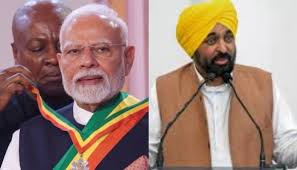Russia may be a clever player on the global scene, yet it remains technologically less sophisticated and unable to compete with the West. Notwithstanding the success of the disruptive world order Moscow pursues, it has not been popular even with the erstwhile allies. India, for instance, is abandoning the Kremlin, its traditional supplier of military hardware in the years to come. Moscow not only lacks the financial muscle but is also challenged by diminishing levels of innovation or improvisation through reverse engineering. Prime facie, Washington looks to substitute the Kremlin for India amidst geo-strategic realignment. Well, not exactly!
Besides pursuing upbeat diplomacy with Washington, Delhi has been working hard for an all-round partnership with Tokyo. Courtesy India’s persistence and patience, the pacifist state has stepped forward notably since the former’s nuclear tests in May 1998.
The drivers
India’s vigorous diplomacy with the United States since the mid-1990s onwards has proven instrumental for its acceptance in the west. Washington’s sole superpower status was unchallenged till the Barack Obama presidency hastened the sluggish retreat. Meanwhile, Delhi concentrated all efforts in intensive diplomacy from Mexico to South Africa and Japan to Australia. The Land of the Rising Sun was significant for post-colonial India owing to its technological niche, which the latter lacks. The relations forged around economic cooperation are opening grander possibilities for both.
Secondly, surging China and the nuclear threat from North Korea have impacted the Japanese public opinion enormously. Thus, a more muscular one is gradually mellowing out the post-war pacifist policy. As Shinzo Abe cleverly perpetuates his grip over power while leading the nation to a more defensive-aggressive posturing, Modi’s India stands out as the foremost partner and beneficiary alike.
Thirdly, both the Asian allies positioned in the periphery of China share deep mistrust of the United States, especially after Trump’s unsettling approach towards the Cold War-era shared arrangement. After the US retraction from the Trans-Pacific Partnership, Beijing is moving in positively to fill the leadership void. The White House has frustrated Indian hopes on the China front, and the president’s forthcoming summit with Xi may be deepening its ache, further intensifying concerns over the superpower’s predictability and consistency.
Additionally, the two countries seem mutually dependent for technological sophistication. While Japan faces dearth requisite expertise in information technology, over a million Indian youth graduate every year. Owing to Donald Trump’s conservative immigration policy, a lucrative job market near the homeland seamlessly serves India’s IT talent. Coincidentally the UK is also embracing full-scale protectionism. For all practical purposes, now is the time for developing countries to head to non-English speaking countries. However, coding alone won’t be enough; the geeks will have to learn another foreign language.
Realizing the potential, India has been actively collaborating with Japanese companies as well as universities. For instance, 25 Indian companies besides two universities including the Indian Institute of Technology Hyderabad attended the Ceatec Japan 2017 held earlier this month. Their skillset ranged from agri-tech business to the class of smart watches that read hand gestures enabling the user to remotely control autonomous vehicles and drones. For the Japanese together with Indian companies, artificial intelligence offers a promising avenue for dual-use technologies.
The prospects
Japan-India friendship has grown from strength to strength. The irritant-free, institutionalized interactions have produced tangible progress for both sides. While India approaches the relationship ambitiously, Japan follows two-step-forward-one-step back policy. As discussed in the previous column, Shinzo Abe’s symbolism-loaded Ahmadabad trip last month resulted in over a dozen agreements and MoUs. From the Open Skies pact and Act East Forum to Asia Africa Growth Corridor, every move is a symptom of long-term global partnership instead of transactional friendship.
Notwithstanding its global power aspirations, India continues to be the largest recipient of Japan’s overseas development assistance in South Asia. JICA, the official development donor, has funded roads connecting cities as well as villages, completed railways and various energy infrastructure projects to help alleviate poverty in India. Given enormity of the challenge, the Japanese taxpayers’ investment in human development in India may not cease any sooner.
Since India sees joining One Belt One Road (OBOR) tantamount to giving in to Chinese domination, it aspires to materialize $200 billion Japan-funded Asia-Africa Growth Corridor. Typically, Delhi’s contribution to the maritime bridge connecting the Asia-Pacific with Africa and Oceania is likely to be miniscule. It’s foot-dragging on financial aspect of Chabahar port development project says a lot. China’s $1 trillion OBOR promises to deliver infrastructural development in lesser-developed countries at an astounding scale and speed comparable to Deng Xiaoping’s transformational era. Besides the fact that the Modi government is pretending to deliver more than it actually does, catching up with OBOR not only requires vision and pragmatic diplomacy but also an industrial base rivaling China to make it viable. Neither India nor Japan can dare China’s fiscal might and production pace.
Whilst Japan’s decision to undo the ban on the export of military hardware in 2014 raised many eyebrows, it propelled India expectations for sophisticated technology to deter Pakistan and China alike. Ever since arms purchase has been a constant feature on India’s wish list. However, Japan has not been obliging at all, thus far. Though both the nations signed an agreement for research and development of military equipment, noteworthy steps are still pending. After the elections called by Premier Shinzo Abe, Japan is likely to strike down a few more pacifist clauses in the constitution, paving the way for an autonomous and more muscular defense policy, resulting in higher military budget, better and voluminous defense production and ambition for their export. India is ready and waiting.
In his address to the Indian parliament, Abe pledged to “strongly promote Japan-India special strategic and global partnership to drive peace and prosperity for Indo-Pacific region and the whole world.” His use of the term ‘strategic’ was noted with accolades.
The Modi government is particularly interested in making defense deals owing to little success with ‘Make-in-India initiative’ as well as to replenish the arsenal against Pakistan and China. Delhi and Tokyo have a very well institutionalized annual defense ministerial dialogue alongside defense policy dialogue et al.
India’s is eager to explore the possibility of partnering with Japan in its forthcoming Project 75 (I) advanced submarine program. However, Tokyo may not be excited about the idea. After construction and induction of six submarines, the possibility of sale or partnering might become a reality. So far, Japan has been hesitant in selling Soryu class submarines to India. Nonetheless, this year’s tri-nation Malabar exercise was particularly significant due to participation of the Izumo, Japan’s helicopter career, which is equipped with advanced technology for anti-submarine operations. The two countries have vocally shared a commitment to anti-submarine training. The Indian Navy is interested in autonomous technologies such as submersible drones in addition to development of anti-torpedo systems.
The tricky twist
Perceptive of the pending obstacles, India has actively pursued a deal for Japanese US-2 amphibious aircraft. It’s not just the reported issue over per unit price but also the precaution of not provoking China, while the North Korea threat is real, which seem to cause the delay. For the same reason, Soryu-class submarines are matters of deliberations but without public pronouncement, a practice repeatedly evident in Pakistan-China cooperation. If anything can herald India-Japan defense cooperation, it would be the US-2 sale. Then, it can also pitch for Kawasaki’s mid-sized, long-range transport jet C-2 and a sub-hunting patrol aircraft P-1.
The Indian strategic community views Japan as a long-term partner in defense collaboration; from futuristic helicopters to unmanned spy or fighter jets and niche maritime technologies. Both have shared interest in space exploration as well.
Even though the era of insulation has almost set in, Japanese politicians may still hesitate to provoke a powerful neighbor. Thus, India’s hopes to get Japan onboard with development in disputed Arunachal Pradesh or South Tibet as well as other northeastern states may not come through.
The India-Japan relationship has unmistakable detrimental effect for the regional balance of power. With export of the latest military hardware and sharing of knowhow to India, Japan will be speeding up destabilization of South Asia, especially in the context of Modi and his clique’s dreams of preemptive strikes against Pakistan and putting Cold Start doctrine to action. Moreover, the naval cooperation in Bay of Bengal will prompt China to return the favor in the waters of Sea of Japan as well as North Arabian Sea.
[This is the second and last part of the analyses deconstructing India-Japan relations for Daily Pakistan Global.]














